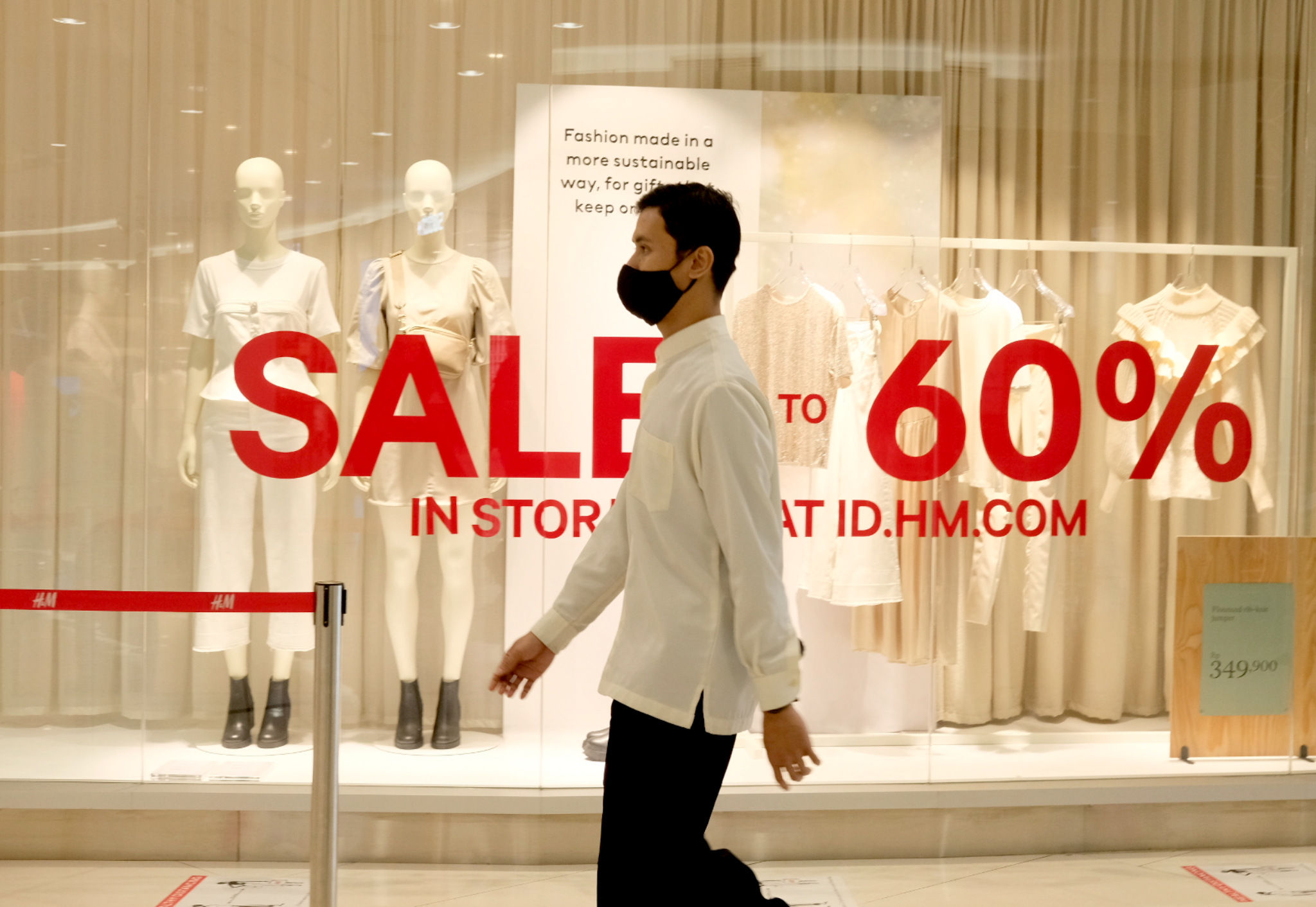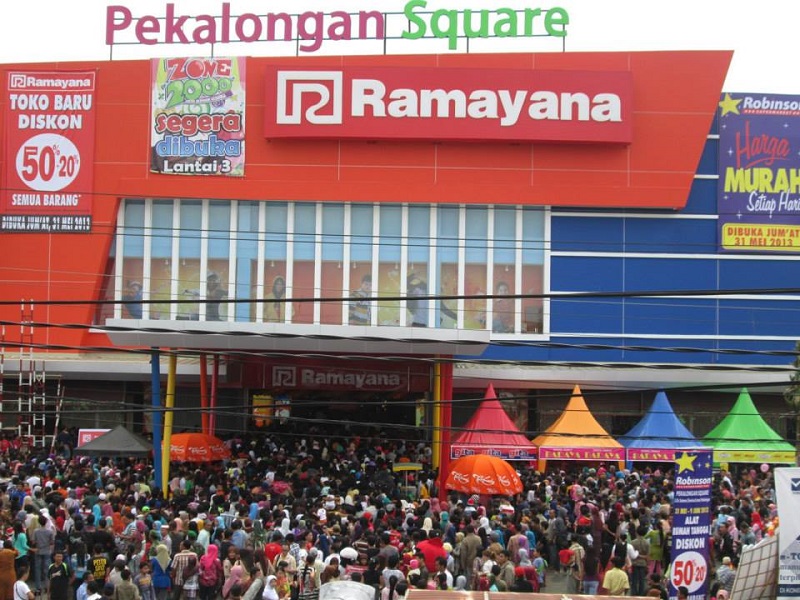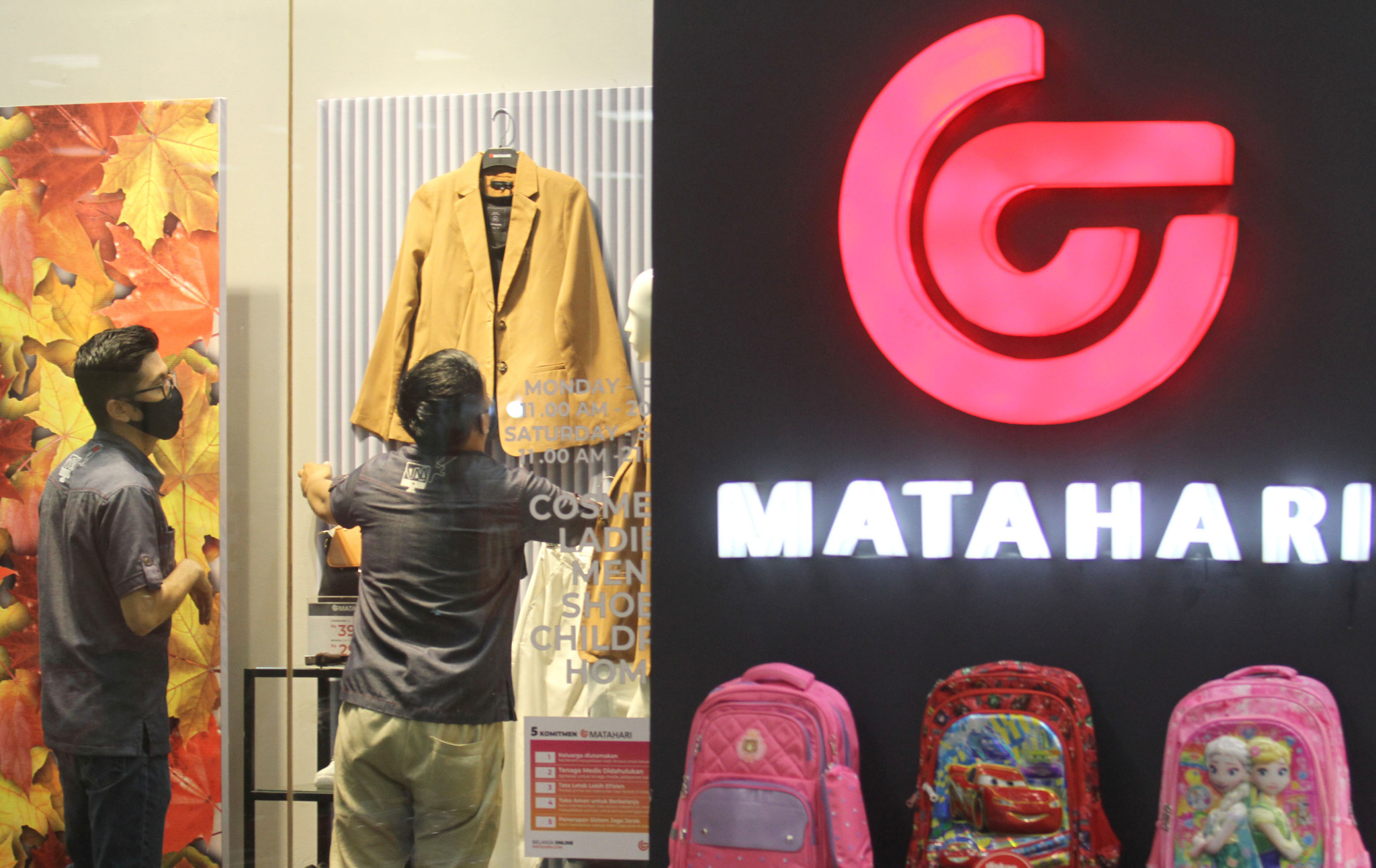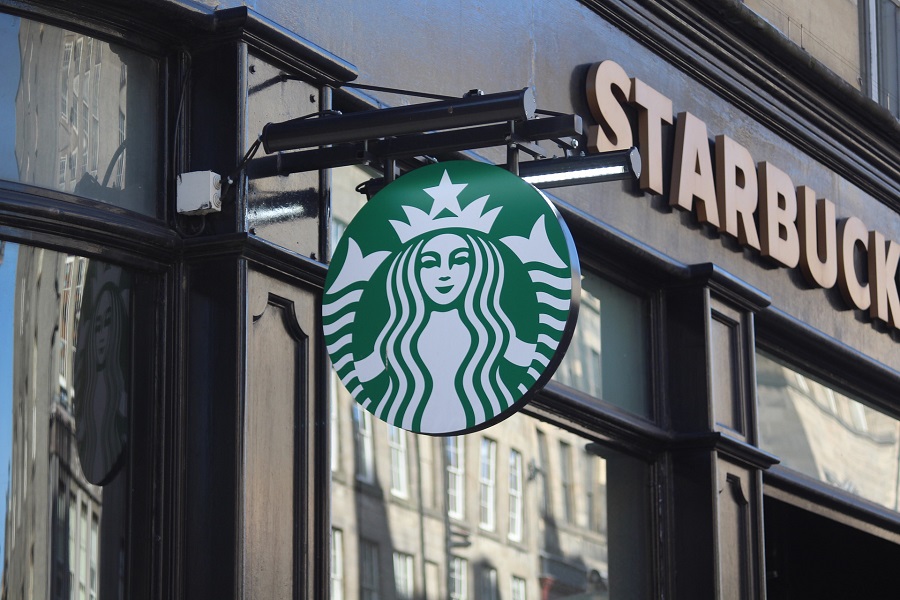
Retail Apocalypse (Serial 3): Performance of Fashion Issuers Vs Hypermart, which is the Stand Out?
JAKARTA – A major trial is currently testing a number of retail issuers in Indonesia. Long before the pandemic, the presence of online buying and selling methods through e-commerce platforms threatened conventional retail businesses. After the corona virus outbreak in Indonesia in the first quarter of 2020, retail players were increasingly distraught. Shortly after, retail […]
Korporasi
JAKARTA – A major trial is currently testing a number of retail issuers in Indonesia. Long before the pandemic, the presence of online buying and selling methods through e-commerce platforms threatened conventional retail businesses.
After the corona virus outbreak in Indonesia in the first quarter of 2020, retail players were increasingly distraught. Shortly after, retail outlets closed congregations. This condition still continues to this day.
This threat is especially felt by retail issuers with the main business of fashion and wholesale retail or hypermarkets. Until the first quarter of 2021, not a few retail companies with fashion and hypermarket businesses experienced shrinking revenues to losses.
- 11 Bank Biayai Proyek Tol Serang-Panimbang Rp6 Triliun
- PTPP Hingga Mei 2021 Raih Kontrak Baru Rp6,7 Triliun
- Rilis Rapid Fire, MNC Studios Milik Hary Tanoe Gandeng Pengembang Game Korea
- Anies Baswedan Tunggu Titah Jokowi untuk Tarik Rem Darurat hingga Lockdown
- IPO Akhir Juni 2021, Era Graharealty Dapat Kode Saham IPAC
The COVID-19 pandemic and the decline purchasing power of the people forced them to close their outlets. In addition, some of them are racking their brains to switch business models, and the rest are venturing into e-commerce and omni-channel businesses.
If retail issuers with fashion and hypermarket businesses are hit by the pandemic, it’s a different story with retail issuers with minimarket businesses. These issuers actually benefit.
The focus on selling basic commodities with a large number of outlets and tends to be closer to the community, is supposedly an advantage for minimarket issuers in the midst of the COVID-19 pandemic.
This time TrenAsia.com will dissect the financial performance as well as the projections of a number of retail issuers from all business sectors throughout 2020 and early 2021. Which issuers have fallen and managed to survive? Here are the reviews!
The Fate of Fashion Retail

Ritel Ramayana Departement Store milik PT Ramayana Lestari Tbk (RALS) / Facebook @ramayanadepartementstroe
In the fashion industry in Indonesia, it is usually divided into three layers according to the segment of the market share. These include the lower middle segment, the middle segment, and the upper middle segment.
For the lower middle-class target market, it is represented by issuer PT Ramayana Lestari Sentosa Tbk (RALS). The company recorded a negative performance throughout 2020 and the first three months of 2021.
Based on the financial statements for the 2020 financial year, RALS posted a total revenue of Rp2.53 trillion. This value fell by around 54.83% year-on-year (yoy) compared to the revenue of Rp5.60 trillion in the previous year.
- 11 Bank Biayai Proyek Tol Serang-Panimbang Rp6 Triliun
- PTPP Hingga Mei 2021 Raih Kontrak Baru Rp6,7 Triliun
- Rilis Rapid Fire, MNC Studios Milik Hary Tanoe Gandeng Pengembang Game Korea
- Anies Baswedan Tunggu Titah Jokowi untuk Tarik Rem Darurat hingga Lockdown
- IPO Akhir Juni 2021, Era Graharealty Dapat Kode Saham IPAC
This made the company reversed a loss of Rp138.87 billion last year. In 2019, RALS still recorded a profit for the year of around Rp647.90 billion.
The lack of consumption activity in the lower-class segment has forced the company to close 13 of its outlets and to lay off hundreds of employees throughout 2020.
This condition did not change much at the beginning of 2021. The Company still recorded a decrease in total revenue of 46.41% to Rp490.94 billion in the first quarter of this year. RALS also suffered a loss of Rp85.67 billion from a profit of Rp13.30 billion in the same period last year.

Suasana pengunjung berbenja di Matahari Departement Store Mal WTC, Serpong, Tangerang Selatan, Banten, Selasa, 20 Oktober 2020. Foto: Panji Asmoro/TrenAsia
Furthermore, the middle-class fashion retail issuers are represented by PT Matahari Department Store Tbk (LPPF). In line with RALS, the financial performance of the issuer, a subsidiary of the Lippo Group, is quite concerning.
Throughout last year, the company recorded a net income of Rp4.84 trillion or a 52.91% decline on an annual basis from the previous year with realized revenues of up to Rp10.28 trillion. LPPF recorded a net loss of Rp873.18 billion in 2020 from a profit of Rp1.37 trillion at the end of 2019 as the result.
In the first three months of 2021, the company managed to minimize the decline in revenue. Although still negative, LPPF’s revenue in Q1-2021 only decreased 24.98% yoy to Rp1.16 trillion. Total losses only slightly increased by around 1.49% on an annual basis from Rp93.54 billion to Rp95.35 billion.
- 11 Bank Biayai Proyek Tol Serang-Panimbang Rp6 Triliun
- PTPP Hingga Mei 2021 Raih Kontrak Baru Rp6,7 Triliun
- Rilis Rapid Fire, MNC Studios Milik Hary Tanoe Gandeng Pengembang Game Korea
- Anies Baswedan Tunggu Titah Jokowi untuk Tarik Rem Darurat hingga Lockdown
- IPO Akhir Juni 2021, Era Graharealty Dapat Kode Saham IPAC
Meanwhile, the issuer of fashion retail with a market share of the upper middle-class is represented by PT Mitra Adiperkasa Tbk (MAPI). MAPI’s financial performance began to show improvement in the first quarter of 2021 having gotten hit hard in the previous year.
Launching its financial report, the company’s net income fell 31.38% yoy to Rp14.85 trillion as of December 31, 2020 from Rp21.64 trillion in the same period the previous year. On the same occasion, MAPI reversed a loss of Rp553.72 billion from the previous profit of Rp933.49 billion in 2019.
Meanwhile, during the first quarter of 2021, the company’s net income was only eroded by 8.66% to Rp4.31 trillion from the same period last year with a total revenue of Rp4.72 trillion.
Different from RALS and LPPF, in this period MAPI successfully recorded profit growth for the year reaching 222.91% yoy from Rp8.08 billion to Rp26.09 billion.
MAPI to be a Fashion Retail Champion?

Pengunjung melintas di depan salah satu tenant pusat perbelanjaan yang menggelar diskon belanja Natal dan Tahun Baru di Mal Senayan City, Jakarta, Jum’at, 25 Desember 2020. Foto: Ismail Pohan/TrenAsia
Mirae Asset Sekuritas Indonesia Research Analyst, Christine Natasya, said that MAPI has an advantage in terms of choosing the target market.
This is because consumers with upper middle income are more resilient in facing economic shocks compared to the other two segments.
She explained, although the pandemic and the implementation of large-scale social restrictions (PSBB) had an impact on the company’s performance, there was an increase in store traffic which boosted the company’s revenue and profit in the last quarter of 2020.
“This is very surprising because in December 2020 the government tightened the PSBB before the Christmas and New Year holidays. However, at the end of last year, MAPI actually recorded revenue growth of up to 38.5 percent from the previous quarter,” said Christine in the SuperStock program, quoted Monday, June 7, 2021.
- 11 Bank Biayai Proyek Tol Serang-Panimbang Rp6 Triliun
- PTPP Hingga Mei 2021 Raih Kontrak Baru Rp6,7 Triliun
- Rilis Rapid Fire, MNC Studios Milik Hary Tanoe Gandeng Pengembang Game Korea
- Anies Baswedan Tunggu Titah Jokowi untuk Tarik Rem Darurat hingga Lockdown
- IPO Akhir Juni 2021, Era Graharealty Dapat Kode Saham IPAC
Furthermore, she explained that MAPI has three business segments, including retail sales or specialty stores with well-known product brands such as ZARA, Pull&Bear, MANGO, Lacoste to Stradivarius.
Meanwhile, MAPI also has a department store business segment, such as SOGO and Seibu. The company holds retail sales licenses for Starbucks, Burger King, and Domino’s Pizza products in the food and beverages business segment.
“In our opinion, MAPI will focus its business on higher profit specialty stores compared to other segments. Because MAPI’s specialty stores business has the largest revenue composition for the company,” said Christine.
She said that the company itself has been focusing its business on the specialty stores business for the last five years. This is in line with the changing behavior of global consumers who prefer to shop for specific fashion products rather than to department stores.

Starbuck, salah satu gerai yang dikelola oleh Mitra Adiperkasa. / Pixabay
In line with this, Christine estimates that the company will record double digit revenue growth for MAPI’s specialty stores business, especially from its subsidiary business line, PT MAP Active Adiperkasa Tbk (MAPA).
“In addition, MAPI saw the potential in the electronic realm, so they entered this business in 2019 by acquiring 18 Infitnite Stores, stores that sell Apple products and rebrand their Infitnite stores to Digimap,” she added.
Not wanting to be left behind with business developments through online platforms, MAPI has also developed digital online shopping. Christine believes the company will survive the intense competition in the e-commerce business in the country with the Mapemall website and other mono-brand sites. MAPI has also partnered with other marketplaces, such as Lazada and Zalora.
With these notes, Christine projects that MAPI’s revenue will grow to 23.3% throughout 2021. This will also increase the company’s level of profitability. The trick is to maintain the number of goods to be imported and maintain cash flow.
“Because during the pandemic, cash flow must be maintained, so it is estimated that MAPI will not allocate too much capital expenditure this year,” said Chistine.
Minimarket Issuers are More Durable

Gerai ritel Hypermart milik PT Matahari Putra Prima Tbk (MPPA) dari Grup Lippo / Lippomallkemang.com
Apart from fashion retail, issuers with hypermarket-based retail businesses also experienced the same thing. For example, the issuer that manages Hypermart, PT Matahari Putra Prima Tbk (MPPA) and the manager of Giant, PT Hero Supermarket Tbk (HERO) have been hit hard by the pandemic.
The complexity of the pandemic conditions, extends the list of losses for MPPA and HERO. The two issuers are reported to have laid off a number of their employees. In fact, HERO swerved, by closing all Giant outlets that were planned to be transformed into IKEA.
However, a similar retail business with a smaller size, actually shows different things. Minimarket-based retail businesses such as Alfamart, managed by PT Sumber Alfaria Trijaya Tbk (AMRT) and Alfamidi, managed by PT Midi Utama Indonesia Tbk (MIDI) appear to be more resilient in the encounter to the pandemic.
- 11 Bank Biayai Proyek Tol Serang-Panimbang Rp6 Triliun
- PTPP Hingga Mei 2021 Raih Kontrak Baru Rp6,7 Triliun
- Rilis Rapid Fire, MNC Studios Milik Hary Tanoe Gandeng Pengembang Game Korea
- Anies Baswedan Tunggu Titah Jokowi untuk Tarik Rem Darurat hingga Lockdown
- IPO Akhir Juni 2021, Era Graharealty Dapat Kode Saham IPAC
AMRT’s net income throughout 2020 actually increased by around 3.95% to Rp75.83 trillion compared to the previous year’s Rp72.94 trillion when a number of issuers were under pressure. However, the company’s net profit fell 4.59% yoy from Rp1.11 trillion to Rp1.06 trillion.
In the same period, MIDI posted net revenues of Rp12.66 trillion, an increase of approximately 8.90% yoy from Rp11.63 trillion in 2019. On the other hand, profit for the year attributable to owners of the parent entity was 1.37% yoy lower to Rp200.27 billion.
In a similar note, Indomaret, which is operated by PT Indomarco Prismatama, also shows a strong ‘shield’ during the pandemic. The subsidiary of PT Indoritel Makmur Internasional Tbk (DNET) belonging to the Salim Group has successfully recorded a positive performance last year.
Based on the 2020 financial report released by DNET, Indomaret’s business line earned net sales of up to Rp86.12 trillion. This value increased by 5.28% compared to the previous year’s sales of Rp81.80 trillion. Even comprehensive net income jumped 35.20% yoy to Rp1.51 trillion.

Dua ritel milik konglomerat Indonesia, yakni Alfamart dan Indomaret yang kerap berdampingan / Foto: Batamnews
Director of PT MNC Asset Management, Edwin Sebayang, agrees that minimarket issuers are able to survive stronger during the pandemic, compared to hypermarket issuers. The main reasons for the minimarket business to grow are the convenience to reach by the public, as well as its smaller size.
“The reason is because the sizes of AMRT and MIDI are smaller and their location is strategic, such as close to housing, offices, and so on,” Edwin wrote to TrenAsia.com, via short message, Monday 7 June 2021.
In addition to the minimarket business, non-consumer retail issuers such as PT Erajaya Swasembada Tbk (ERAA), PT Ace Hardware Indonesia Tbk (ACES), and PT Catur Sentosa Adiprana Tbk (CSAP) are companies that are resistant to the onslaught of the COVID-19 pandemic.
From these reviews, which businesses and which issuers are expected to fall and grow?
This article is a series of special reports. The previous articles are:
- Retail Apocalypse (Serial 1): Indonesian Retail Companies Crumble Before and After the Pandemic
- Retail Apocalypse (Serial 2): Indonesian Retail Issuers Implement Offline and Online Moves
Writer: Dean Muhyil Ihsan
Editor: Sukirno
